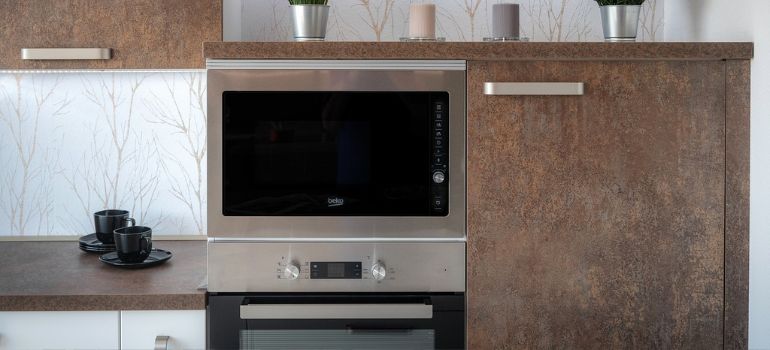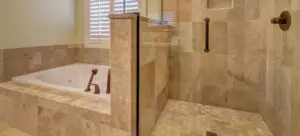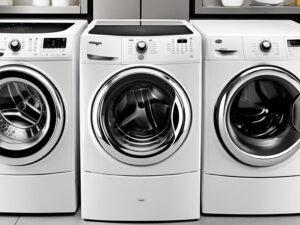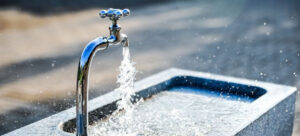Introduction
Welcome to the world of DIY kitchen improvements! Today, we’re focusing on an often-overlooked yet crucial component of cabinet installation: the filler strips. These nifty little additions ensure your cabinets look seamless and professional. But how do you install them correctly? Let’s find out!
What are Cabinet Filler Strips?
Imagine trying to fit your cabinets into an uneven wall space – tricky, right? This is where cabinet filler strips come in. They are narrow panels used to fill the gaps between your cabinets and walls, ensuring a snug and aesthetically pleasing finish.
Tools and Materials Needed
Before we start, make sure you have the following:
- A saw (preferably a table saw for precision)
- Measuring tape
- Screws and a drill
- The filler strips themselves
- A level for accurate alignment
Preparation Before Installation
Measure the gap between the cabinet and the wall. Remember, precision is key, so measure twice! Then, cut your filler strip to size, ensuring it fits perfectly.
Step-by-Step Installation Guide
- Measure the Gap
- Begin by measuring the space between your cabinet and the wall. This measurement will determine the width of your filler strip. It’s crucial to be accurate, so take your time with this step.
- Cut the Filler Strip
- Once you have your measurements, it’s time to cut the filler strip to size. Use a saw for this – a table saw is ideal for ensuring straight cuts. If you’re using a hand saw, a guide can help maintain a straight line.
- Dry Fit the Strip
- Before securing the strip, do a dry fit. Place it in the gap to ensure it fits perfectly. If it’s too tight or too loose, make the necessary adjustments.
- Mark Drill Points
- With the filler strip in place, mark where you’ll need to drill. This ensures that the screws will go into the cabinet’s frame, providing a secure fit.
- Drill Pilot Holes
- Remove the strip and drill pilot holes where you marked. Pilot holes prevent the wood from splitting when you insert the screws.
- Attach the Filler Strip
- Align the filler strip back into position. Secure it with screws, drilling them through the pilot holes into the cabinet frame. Be careful not to overtighten the screws, as this could strip the wood or damage the strip.
- Check Alignment
- Use a level to check the alignment of the filler strip. It should be perfectly vertical to ensure a seamless look with the cabinets.
- Final Adjustments
- If necessary, make any final adjustments to ensure the strip fits snugly and looks aligned with the rest of your cabinetry.
- Finish the Strip
- If your filler strip is unfinished, now is the time to paint or stain it to match your cabinets. Apply a sealant if necessary to protect the wood.
- Clean Up
- Finally, clean up any sawdust or debris from your working area. Admire your handiwork and enjoy your newly flawless cabinetry!
Troubleshooting Common Issues
- Filler Strip is Too Wide or Narrow
- Issue: The strip doesn’t fit the gap perfectly.
- Solution: Remasure the gap and the strip. If the strip is too wide, carefully trim it down with a saw. If it’s too narrow, you may need to cut a new strip that fits better.
- Gaps Between the Strip and Cabinet or Wall
- Issue: There are visible gaps after installation.
- Solution: This often occurs due to uneven walls or cabinets. Use wood filler to fill any small gaps, then sand it down and paint or stain to match.
- Screws Not Holding
- Issue: The screws may not grip properly, causing the strip to be loose.
- Solution: Ensure you’re screwing into the cabinet frame and not just the panel. If the wood is stripped, use larger screws or wall anchors for a firmer hold.
- Strip is Not Level
- Issue: The filler strip looks uneven or crooked.
- Solution: Loosen the screws slightly and adjust the strip until it’s level. Use a level tool for accuracy. Once aligned, retighten the screws.
- Damaged Strip During Installation
- Issue: The strip gets cracked or chipped.
- Solution: If the damage is minor, wood filler can be used to repair it. For significant damage, it’s best to cut a new strip.
- Mismatched Color or Finish
- Issue: The filler strip doesn’t match the cabinets.
- Solution: If you haven’t painted or stained it yet, take a cabinet door to your local hardware store for color matching. If it’s already finished, you may need to sand it down and refinish.
- Difficulty Aligning Strip with Cabinets
- Issue: The strip doesn’t align properly with the edges of the cabinets.
- Solution: Check if your cabinets are level and aligned correctly. Adjust the cabinets if necessary before installing the filler strip.
- Tools Not Suitable for the Job
- Issue: Difficulty cutting or fitting the strip due to inadequate tools.
- Solution: Ensure you have the right tools for the job. A table saw or a hand saw with a guide can ensure straight cuts. A drill with various bit sizes can help with precise drilling.
Finishing Touches
Now, paint or seal your filler strips to match your cabinets. This not only looks great but also protects the wood.
Maintenance Tips
Keep your filler strips looking great with regular cleaning and touch-up painting when necessary.
DIY vs. Professional Installation
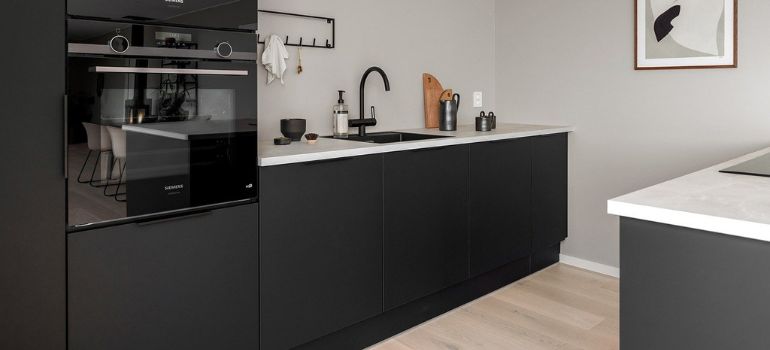
While DIY is rewarding, don’t hesitate to call a professional if you’re unsure about any step in the process.
Cost Considerations
When planning to install cabinet filler strips, it’s important to consider the various costs involved. Understanding these expenses can help you budget effectively and make informed decisions. Here’s a breakdown:
- Material Costs
- Filler Strips: The cost of filler strips varies depending on the material (e.g., wood, MDF, plastic) and finish. High-quality wood strips can be more expensive, but they offer a better look and durability.
- Paint or Stain: If you need to paint or stain the strips to match your cabinets, factor in the cost of these supplies.
- Tool Costs
- Saw: If you don’t already have a saw, you may need to purchase or rent one. A hand saw is less expensive, while a table saw is more costly but provides cleaner cuts.
- Drill: A basic drill is essential for securing the strips. If you don’t own one, consider borrowing, renting, or buying.
- Hardware Costs
- Screws and Anchors: These are usually inexpensive, but ensure you have the right size and type for your cabinets.
- Labor Costs
- DIY vs. Professional Installation: Doing it yourself can save labor costs, but if you’re not confident in your DIY skills, hiring a professional might be worth the extra expense for a flawless finish.
- Additional Supplies
- Sandpaper, Wood Filler, Sealant: Small but essential items like sandpaper, wood filler for gaps, and sealant for finishing can add to the overall cost.
- Unexpected Costs
- Always set aside a contingency budget for unexpected expenses, such as additional materials or tools.
- Cost-Saving Tips
- Do It Yourself: If you have basic DIY skills, installing filler strips can be a manageable project.
- Repurpose Materials: If you have leftover materials from other projects, see if they can be repurposed for this one.
- Shop Around: Compare prices at different hardware stores or online for the best deals on materials and tools.
- Long-Term Considerations
- Investing in quality materials and proper installation can save money in the long run due to less maintenance and the need for replacements.
Environmental Considerations
Opt for eco-friendly materials like sustainable wood or recycled materials for your filler strips.
Safety Tips
Always wear protective gear like gloves and goggles when cutting and drilling. Safety should never be compromised.
Advanced Techniques
- Precision Cutting for Perfect Fit
- Technique: Use a table saw with a fine-tooth blade for precision cuts. This ensures that your filler strips fit snugly and seamlessly.
- Benefits: Reduces gaps and misalignments, giving a more professional finish.
- Custom Angled Cuts for Uneven Walls
- Technique: If your walls are not perfectly straight (a common issue in older homes), make custom angled cuts on the filler strips to match the wall contour.
- Benefits: This technique allows for a flush fit against uneven walls, ensuring no gaps.
- Using a Router for Decorative Edges
- Technique: Use a router to create decorative edges on the filler strips, especially if they are visible and part of the cabinet design.
- Benefits: Adds a custom, high-end look to your cabinetry.
- Seamless Integration with Existing Cabinetry
- Technique: Stain or paint the filler strips before installation to match your existing cabinetry perfectly. Apply a finish (like lacquer or varnish) for added durability and sheen.
- Benefits: Ensures that the filler strips blend in flawlessly with your cabinets.
- Incorporating Hidden Storage
- Technique: Convert the filler strip space into a pull-out spice rack or storage for small items. This requires more advanced woodworking skills and precise measurements.
- Benefits: Maximizes kitchen space and adds functionality.
- Creating a Flush Finish
- Technique: Scribe the filler strip to the contour of the wall for a flush finish. This involves using a scribing tool to trace the wall’s outline onto the strip and then cutting along the line.
- Benefits: Eliminates gaps between the wall and the filler strip, enhancing the overall look.
- Reinforced Attachment for Stability
- Technique: Use dowels or biscuits for a stronger joint between the filler strip and the cabinet, especially for larger or heavier filler pieces.
- Benefits: Offers additional stability and support, ensuring the filler strips stay securely in place.
- Heat and Moisture Resistance
- Technique: Apply a heat-resistant and moisture-resistant finish, especially if the filler strips are near appliances like ovens or dishwashers.
- Benefits: Increases the longevity of the filler strips and protects them from warping or damage.
Conclusion
There you have it – a complete guide on installing cabinet filler strips! With the right tools, patience, and a bit of elbow grease, you can achieve a professional-looking finish that complements your kitchen beautifully.
FAQs
It’s challenging but not impossible. You can use a hammer and nails, but a drill provides more precision and strength.
Match them to your cabinets. If you’re painting them, get a color match from your local hardware store.
A table saw ensures a straight, clean cut. If you don’t have one, a hand saw with a guide can work too.
Check and clean them every few months. Repaint or seal as needed, typically every couple of years.
Yes! Look for filler strips made from sustainable wood or recycled materials.
